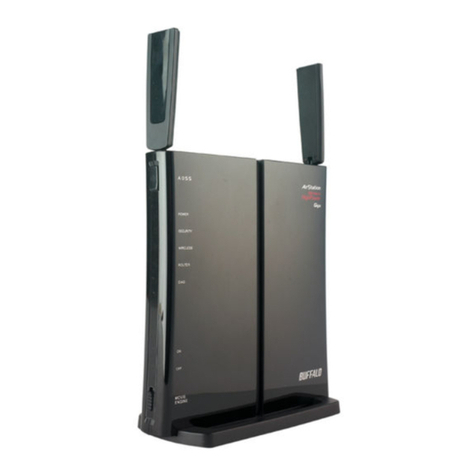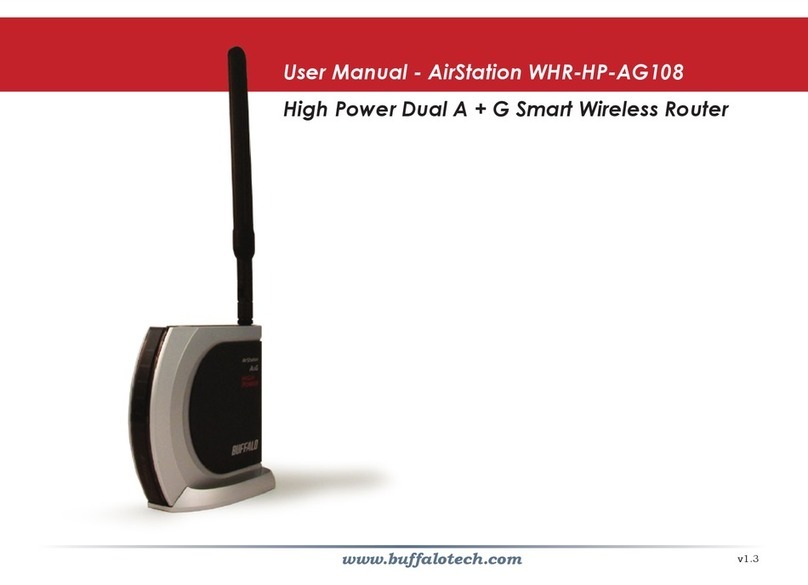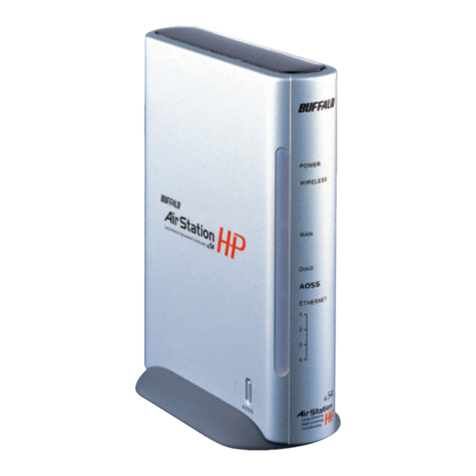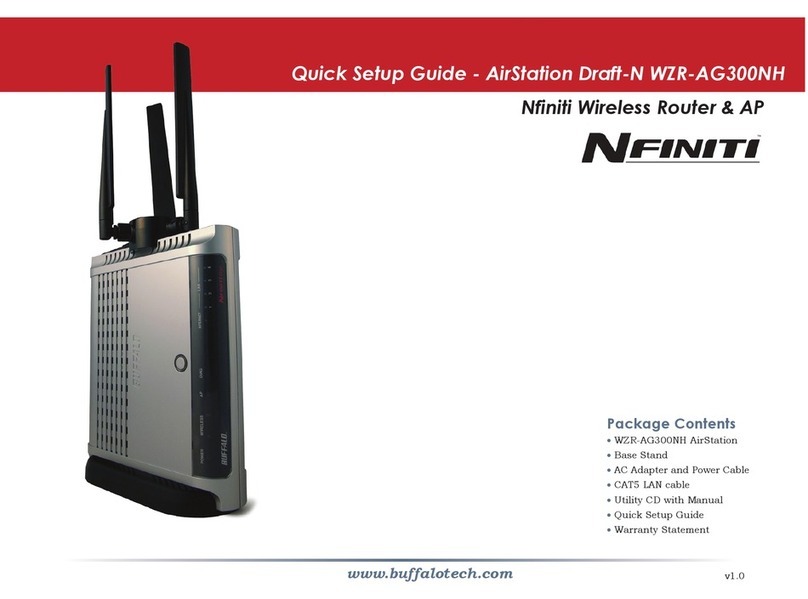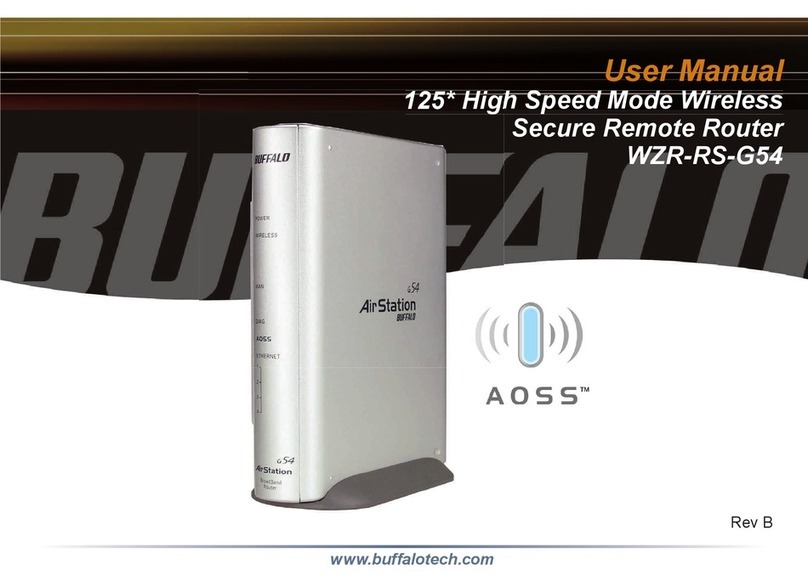8
The AirStation can be reconfigured anytime via a Web browser using
a wired or wireless connection by entering 192.168.11.1 (or the new
IP address, if you’ve changed it) in the URL address field of the Web
browser and pressing the Enter key on the keyboard.
Additional Information:
AOSS (AirStation One-Touch Secure System)
The WHR-HP-G54 supports Buffalo’s AOSS system for connecting AOSS
compatible wireless clients to the WHR-HP-G54. For information about
AOSS, please refer to the AOSS Supplement which is included in the
WHR-HP-G54 package contents.
IP Addressing
To verify your IP settings for static or automatic addressing, click Start,
select Settings (if present) and click Control Panel.Within Control Panel,
double-click Network or Network Connections. You can then right-click
on any of your wired or wireless connections and select Properties.
Within the properties, you can view the properties of your TCP/IP
protocol.
Generally, you will want to be sure that Obtain an IP address
automatically is selected to allow easier connections. To manually renew
IP addressing configurations for your connection, follow these steps:
• Click Start and Run. A dialog box will appear where you can type
cmd into the field provided and click OK.
• An MS-DOS prompt will launch. Enter IPCONFIG /RELEASE and
press the Enter key on the keyboard to release your current IP
configuration. Next, enter IPCONFIG /RENEW and press the Enter
key to seek new settings from a DHCP server. (This may take a few
moments).
• Type IPCONFIG /ALL. This will display all the IP configurations for
your wired or wireless connection.
• The Default Gateway address listed in the results is usually the
IP address of the AirStation. If no IP addresses are listed or your
wireless adapter displays a 169.254.XXX.XXX address, retrace the
setup steps to verify correct installation.
• Type EXIT to close out the DOS window.
